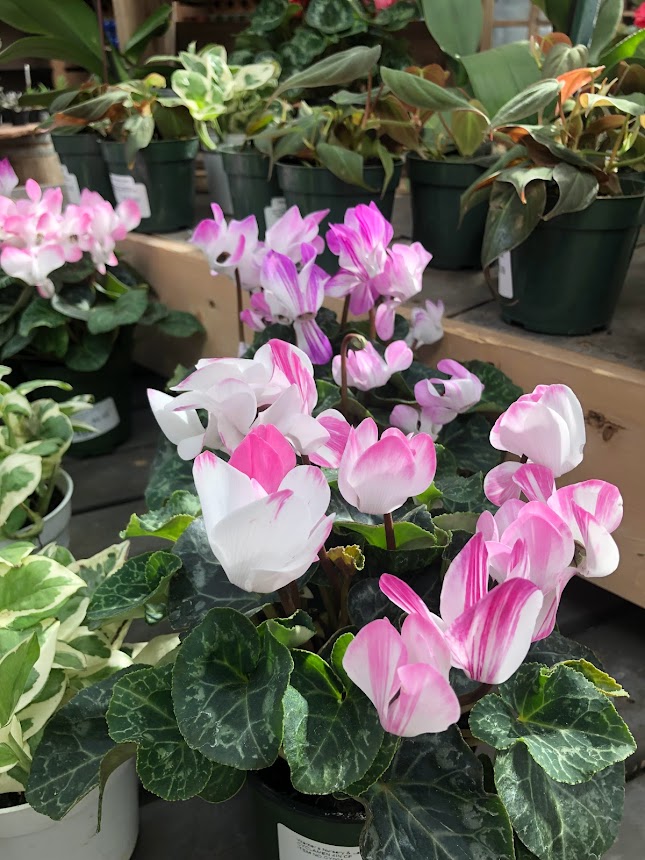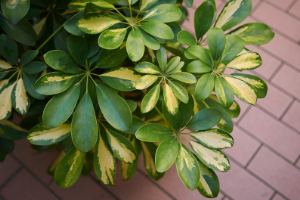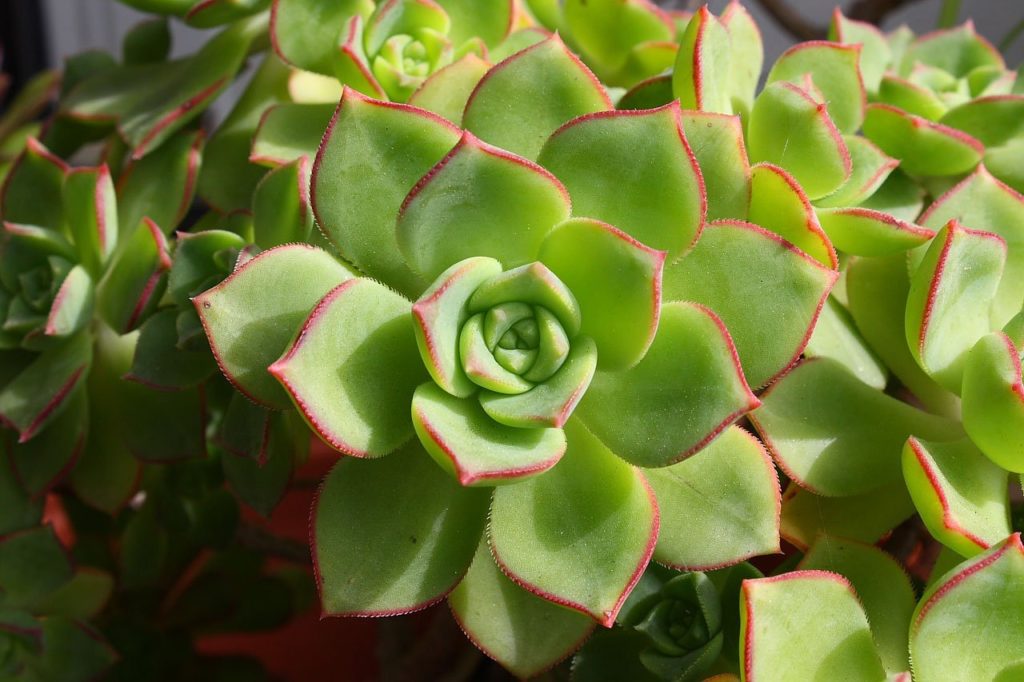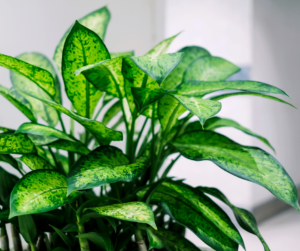There’s something very romantic about cyclamen, one of our favorite winter houseplants.
Maybe it’s the petite blooms on long stems that stretch up above its green and silver foliage. Or the colors – cyclamen flowers come in shades of pink, violet, red and white and have a pleasing, sweet scent. Or those heart-shaped leaves.

We mention that they are our favorite winter houseplant, because unlike most indoor plants, their dormancy period is in the summer. Cyclamen are “tuberous perennials,” meaning they die down to their thick roots (tubers) in the heat of summer, then re-emerge and bloom again as the temperatures cool in fall.
Here are some tips for cyclamen care:
Light: Bright and indirect light in winter when the plant is actively growing. When dormant, keep your cyclamen in a cool, dark area with good ventilation.
Soil: These pretty plants like organically rich soil that drains well. Potting soil does well, but you might want to add some peat in to increase the acidity slightly.
Water: When leaves are present, the plant is actively growing and you should water when the first inch of soil below the surface feels dry. Do not overwater! It’s a common way to kill these plants. Don’t get the leaves or crown of the plant wet, which can lead to rot.
When the plant is dormant during the summer, reduce watering. All you are trying to do during this time is prevent the soil from entirely drying out.
Temperature and Humidity – Cyclamen plants don’t like extreme heat or dry air. Keep them away from drafts too. During the winter, when our air is so dry, cyclamen really want high humidity. Our suggestion would be keeping your cyclamen on a tray with pebbles and water. Just make sure that it isn’t sitting in the water, as that can cause root rot.
Feeding Time – Your cyclamen would appreciate some diluted liquid low-nitrogen fertilizer every couple of weeks while in full leaf. You don’t need to feed your cyclamen while it’s dormant.





 Showy, beautiful and easy to care for, Dieffenbachia can make a super indoor plant.
Showy, beautiful and easy to care for, Dieffenbachia can make a super indoor plant.

